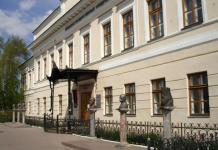Description
Purpose of the study
Current state and prospects for the development of the market for container gas stations in Russia.
Research objectives:
1. Trends and prospects of the container gas station market in Russia
2. Classification of container gas stations.
3. Volume and growth rate of the container gas station market in Russia.
4. Volume and growth rate of production of container gas stations in Russia.
5. Volume of imports to Russia and exports from Russia of container gas stations.
6. Market shares of the main participants in the container gas station market.
Object of study
Market of container gas stations in Russia.
Data collection and analysis method
The main method of data collection is document monitoring.
The main methods of data analysis are the so-called (1) Traditional (qualitative) content analysis of interviews and documents and (2) Quantitative (quantitative) analysis using software packages to which our agency has access.
Content analysis is performed as part of Desk Research. In general, the purpose of the desk research is to analyze the situation on the container gas station market and obtain (calculate) indicators characterizing its condition now and in the future.
Data Analysis Method
1. Databases of the Federal Customs Service of the Russian Federation, FSGS of the Russian Federation (Rosstat).
2. Materials DataMonitor, EuroMonitor, Eurostat.
3. Printed and electronic business and specialized publications, analytical reviews.
4. Internet resources in Russia and the world.
5. Expert surveys.
6. Materials from participants in the domestic and world markets.
7. Results of research from marketing and consulting agencies.
8. Materials of industry institutions and databases.
9. Results of price monitoring.
10. Materials and databases of UN statistics (United Nations Statistics Division: Commodity Trade Statistics, Industrial Commodity Statistics, Food and Agriculture Organization, etc.).
11. Materials of the International Monetary Fund.
12. Materials of the World Bank.
13. Materials of the WTO (World Trade Organization).
14. Materials of the Organization for Economic Cooperation and Development.
15. Materials of the International Trade Centre.
16. Materials Index Mundi.
17. Research results of DISCOVERY Research Group.
Sample size and structure
The procedure for content analysis of documents does not involve calculating the size of the sample population. All documents available to the researcher are subject to processing and analysis.
The report is accompanied by a processed database suitable for further use with detailed information on the import to Russia and export from Russia of container gas stations. The database includes a large number of different indicators:
1. Manufacturer
2. Year of import/export
3. Month of import/export
4. Companies receiving and sending goods
5. Recipient countries, senders and manufacturers of goods
6. Volume of imports and exports in physical terms
7. Volume of imports and exports in value terms
Summary:
The marketing agency DISCOVERY Research Group has completed a study of the Russian market for container gas stations.
The market volume of container gas stations in Russia in 2017 amounted to $2,739.1 thousand or 143 units.
The production volume of container gas stations in Russia in 2017 was equal to $2,678.2 thousand or 182 units.
The largest manufacturers of container gas stations in Russia are LLC "PLANT OF TANK STRUCTURES STROYTEKHMASH" and CJSC "PENZASPETSAVTOMASH".
The volume of imports of container gas stations to Russia in 2017 was equal to $64.7 thousand or 4 units.
The largest volume of imports in 2017 was carried out by PETROMETAL LLC.
The volume of exports of container gas stations from Russia in 2017 was equal to $3.9 thousand or 4 units. In 2017, the company RIETBERGWERK E GMBH & CO exported from Russia. KG.
Expand
ContentDetailed table of contents/contents of the report:
|
List of tables and charts |
|
|
Diagrams: |
|
|
Chapter 1. Technological characteristics of the study |
|
|
§1.1. Purpose of the study |
|
|
§1.2. Research objectives |
|
|
§1.3. Object of study |
|
|
§1.4. Data collection and analysis method |
|
|
§1.5. Sources of information |
|
|
§1.6. Sample size and structure |
|
|
Chapter 2. Trends and prospects for the container gas station market in Russia |
|
|
Chapter 3. Classification and main characteristics of container gas stations |
|
|
Chapter 4. Volume and growth rate of the market for container gas stations in Russia |
|
|
§4.1. In kind |
|
|
§4.2. In value terms |
|
|
Chapter 5. Production of container gas stations in Russia |
|
|
§5.1. In kind |
|
|
§5.2. In value terms |
|
|
Chapter 6. Import to Russia and export from Russia |
|
|
§6.1. Import of container gas stations by manufacturer |
|
|
6.1.1. In kind |
|
|
6.1.2. in value terms |
|
|
§6.2. container gas stations by manufacturer |
|
|
6.2.1. In kind |
|
|
6.2.2. in value terms |
List of appendices to the report; number and names of tables, charts, graphs:
The report contains 10 tables and 16 charts.
Expand
TablesTables:
Table 1. Market volume, import, export and production of container gas stations in Russia, pcs.
Table 2. Market volume, import, export and production of the container gas station market in Russia by manufacturer, pcs.
Table 3. Market volume, import, export and production of container gas stations in Russia, thousand $.
Table 4. Market volume, import, export and production of the container gas station market in Russia by manufacturer, thousand $.
Table 5. Production volume of the container gas station market in Russia, pcs.
Table 6. Production volume of the container gas station market in Russia, thousand $.
Table 7. Volume of imports of container gas stations by manufacturer to Russia, pcs.
Table 8. Volume of imports of container gas stations by manufacturer to Russia, thousand $.
Table 9. Volume of exports of container gas stations from Russia, pcs.
Table 10. Volume of exports of container gas stations from Russia, thousand $.
Diagrams:
Diagram 1. Growth rates of market volumes, imports, exports and production of container gas stations in Russia in physical terms, %.
Diagram 2. Shares of manufacturers in the total market volume of container gas stations in Russia, % of the natural market volume.
Diagram 3. Growth rates of market volumes, imports, exports and production of container gas stations in Russia in value terms, %.
Diagram 4. Shares of manufacturers in the total market volume of container gas stations in Russia, % of the market value.
Diagram 5. Volume and growth rate of production of container gas stations in Russia, thousand $ and % of growth from the natural volume of the market
Diagram 6. Shares of the constituent entities of the Russian Federation in the production volume of the container gas station market in Russia, % of natural volume.
Diagram 7. Shares of manufacturers in the production volume of the container gas station market in Russia, % of natural volume.
Diagram 8. Volume and growth rate of production of container gas stations in Russia, thousand $ and % increase in market value
Diagram 9. Shares of the constituent entities of the Russian Federation in the production volume of the container gas station market in Russia, % of the value volume.
Diagram 10. Shares of manufacturers in the production volume of the container gas station market in Russia, % of value.
Diagram 11. Volume and growth rate of imports of container gas stations to Russia, pcs. and % increase in natural market volume
Diagram 12. Import structure of the container gas station market in Russia by manufacturer, % of the segment’s natural volume
Diagram 13. Volume and growth rate of imports of container gas stations to Russia, thousand $ and % increase in market value
Diagram 14. Import structure of the container gas station market in Russia by manufacturer, % of market value
Diagram 15. Volume and growth rate of exports of container gas stations from Russia, pcs. and % increase in natural market volume
Diagram 16. Volume and growth rate of exports of container gas stations from Russia, thousand $ and % increase in market value
The process of creating a gas station from scratch is painstaking both from the point of view of material support for the project and from the point of view of obtaining permits. It is much easier to buy a gas station in Moscow and St. Petersburg from the owner, fully equipped with equipment and personnel. This is to minimize costs and obtain a ready-made solution for profit automation. You can buy ready-made refills using an electronic service with offers on the market.
How and where to organize the sale of your business?
Business assets are sold on bulletin boards. Such advertisements are placed by owners and intermediaries, so it can be difficult to navigate.
You can buy a gas station through a broker, who will not only connect you with the owner, but also take care of re-registration of documents for the gas station. Before turning to specific offers, it is worth assessing your financial capabilities, focusing on how well you understand the topic, and also evaluating the gas stations sold in terms of price adequacy.
It is also important to verify the authenticity of the documents and find out about the reputation of both the gas station itself and its owner. It is possible that he is selling his business due to low profitability. Factors may be contradictory - either the person simply could not manage his affairs, or the gas station is obviously unprofitable.
What are the benefits of buying a gas station like this?
Upon request, I will sell a ready-made business gas station, you can see not only the pump itself. In the property package, you have at your disposal a land plot, an oil depot, tanks, a cash desk, an office building, adjacent territory, as well as areas of shops and supermarkets, which may be leased to partners. An offer such as the sale of a ready-made business - gas stations - is interesting not only to the buyer, but also to the potential seller. You can sell a gas station on the website, indicating the main parameters of the object, its condition, potential, payback, as well as projected profit. A database on request for selling a business in Moscow will allow you to navigate in terms of the price of the product. Many people do just that - they open a business and sell it profitably.
A “roll up the hoses” mood. Independent gas stations have begun to actively leave the Russian market. This segment accounts for 40% of fuel sales in Russia, but next year, according to experts, the number of tankers could be halved. According to the Independent Fuel Union, gas stations vitally need a markup on gasoline of at least three rubles per liter, otherwise they operate at a loss.
Now, in accordance with the signed agreement between the government and large oil companies to “freeze” retail fuel prices, the average margin is 1 ruble 70 kopecks. Director and co-owner of the Olvi gas station chain, Oleg Kuzin, called the situation in the retail fuel market catastrophic:
For the last 8 months we have been on the brink of survival and are holding on only due to the reserves that were accumulated earlier. As a specific example, a large network of Vityazi gas stations, consisting of 16 stations, was closed in the Samara region. And the majority of independent gas stations have the same “roll up the hoses” mood. This does not happen because we want to dictate terms to someone, but because it simply becomes pointless to work.
Photo: GANNA MARTYSHEVA / Shutterstock.com
The situation is similar in other regions of Russia. Independent gas stations do not want to operate at a loss and decide to “wind down” their business. There will be more, professional market participants say. From January 1, 2019, excise taxes on fuel will be increased by one and a half times, which will hit the pockets of gas stations even harder, who are prohibited from raising price tags at gas stations. Commercial director of the Northern Empire gas station network, Igor Efremov, called this step economic sabotage:
Excise tax - what is it? This is an additional tax. This means they added something else. How can we not raise the price next year if the excise tax has been added? This is the economic illiteracy of the government that we have to live with.
The fiscal burden on the domestic market is significant even without the upcoming increase. Excise taxes, mineral extraction tax, VAT and other taxes account for 62% of the cost of gasoline. 9% are retail costs, 11% are production costs, another 10% are company profits and 8% are refining and transportation costs. It is impossible to talk about the last point without irony. The more expensive gasoline is, the more expensive it is to transport, and in turn, higher transportation prices lead to higher prices for gasoline.

Infographics: TV channel “Tsargrad”
At the same time, the tax burden for those who sell fuel for export is reduced. In Russia, a situation has developed in which export duties on oil are being reduced, and the mineral extraction tax is increasing. The federal government calls this a “tax maneuver.” It started 3 years ago and should last until 2019.
Oil companies found themselves in a situation in which it became more profitable to sell fuel abroad rather than in their own country, said Pavel Bazhenov, president of the independent fuel union:
We provide for significantly more taxes on the domestic market than export taxes. This constantly causes a situation in which exports become more interesting, and volumes from the domestic market move outside. At the same time, we don’t have enough volumes - fluctuations and jumps begin.
Another factor that negatively affects the domestic market is the breakdown of the fuel supply chain. It is becoming increasingly difficult for independent players to purchase fuel on the exchange - almost the entire volume is chosen by large oil companies, which actually buy fuel from themselves, and even at inflated prices, and then sell it at their own gas stations. The Independent Fuel Union called this situation pure monopolization. Here is what, in particular, Pavel Bazhenov said: “We are observing the monopolistic nature of the Russian domestic market. This harms both independent fuelers and fuel consumers. If the situation does not change, we will lose a number of gas stations.”
If a number of independent gas stations still cannot withstand the current conditions and close, the market will face the problem of a shortage of gas stations. It will be felt especially acutely in small settlements - where it is unprofitable for large players such as Lukoil and Gazprom to open and maintain gas stations. Experts say: people from villages will be forced to travel tens of kilometers to the nearest gas station. In cities, this will result in queues among car owners.
But it’s not even this that’s scary, but the progressive monopolization of the market by large vertically integrated fuel companies. They will have all the bargaining chips to manipulate prices. The Independent Fuel Union says that it is difficult to correct the situation, but it is possible. As stabilizing measures, it is proposed to cancel the increase in excise taxes on fuel planned for next year, begin to liberalize prices, introduce obligations for large oil companies to sell the entire volume of petroleum products on the stock exchange, increase export duties and reduce the mineral extraction tax.
Moscow is the most capacious and solvent fuel market in Russia. About 3 million tons of fuel are sold here annually at 680 gas stations. The annual turnover of this market, taking into account related services, can be estimated at approximately 1.5 billion dollars, and this is real money. Today there are about 250 companies on the Moscow fuel market. But only 60 of them, united in the Moscow Fuel Association, control 85-90% of the petroleum products supplied to the capital. The MTA currently covers about 450 gas stations. Over the past three years, investors have invested more than $500 million in the gas station sector, and construction continues.
In Moscow in 1999, 100 container gas stations are to be dismantled, and some of them will be replaced by stationary complexes. The optimal number of gas stations given the current size of the vehicle fleet is considered to be 750. At the same time, the cost of equipment and building structures for a modern gas station with 8 refueling places reaches up to 700 thousand dollars, and the entire complex - up to 3 million dollars. From 1992 to 1996, the city leased approximately 140 MPKA gas stations to approximately 25 investor firms. It was assumed that after signing the contract, the investor must coordinate all his actions with the relevant authorities within the first eight months, and then completely re-equip the gas stations within 18 months. Having completed the reconstruction, the investor could buy MPKA gas stations at their residual value. The terms of the agreement were only partially fulfilled. In December 1997, a new fuel structure “Moscow Fuel Company” (MTK) appeared in the capital, established on a parity basis by the Moscow government and “Most-Oil” (part of the “Most” group). The main production base of MTK was one of the largest in the capital, the Paveltsovskaya oil depot, and the remaining 56 MPKA gas stations.
In St. Petersburg there are currently 170 stationary and 113 container ones, 13 of them in the region. In 1998, 20 new stations and gas filling complexes were built in St. Petersburg, and 26 underwent major reconstruction. In 1999, it is planned to completely abandon container-type gas stations. It is expected that they will be divided into several categories. One of them provides for the possibility of reconstructing stations into stationary ones. About 20 gas stations will be completely eliminated.
About 20-25% of the city's gas stations use morally and physically outdated equipment. The Nara-2, Nara-6, Livny, as well as Nara-22 with a mechanical readout are still in operation. The error in dispensing fuel on them is 0.5%. In recent years, the shopping mall park has begun to be updated. Columns with electronic reading are being put into operation: these are domestic “Nara-27”, “Nara-28”, imported ones - “Nestern” (Finland), “Vein Dresse” (Sweden), “Gilbarko” (England), “Schluberter” ( Germany), “ADAST” (Czech Republic). At the same time, mobile stations disappeared from the market.
The Baltic Financial and Industrial Group is the largest company in the North-West for the supply and sale of petroleum products. BFPG represents the interests of the Gilbarco company in the North-West of Russia and supplies equipment from this company. The Baltic Financial-Industrial Group includes: CJSC Baltic Financial-Industrial Group, CJSC Rosneft-Baltika, CJSC Balt-Market, LLC Eco-Belm, CJSC Balt-Trade, CJSC Mega- Plus”, LLC “Ekor”, LLC “Stimul”, LLC “Rosserneft”, LLC “Balt-Selkhoztekhnika”, CJSC “Trans-LES”, CJSC “Baltika-Dorservice”, CJSC “Sevzap-Oil”, etc. During the period From 1996 to 1998, the company built 20 gas stations and handed them over to subsidiaries for operation; annual sales of gasoline and diesel fuel amounted to about 200 thousand tons.
Based on the certification of gas stations, the State Licensing Center has developed criteria for assessing the condition of gas stations in St. Petersburg. Based on a rating analysis of 83 indicators, such. The top twenty best gas stations were determined based on the technical condition and equipment, the complexity of the services provided, compliance with the rules and regulations for the safety of station operation, and others. They belong to 11 companies - Neste St. Petersburg LLC, Shell Gas Station LLC, NTK LLC, Transservice CJSC, Barel-P LLC, Rusland LLC, Egreen Inc. CJSC, TIK CJSC Balt-Trade”, CJSC “Kirishiavtoservis”, LLP “Velior” and private enterprise “Gorbuntsova D.Yu.”
Of the 15 St. Petersburg gas stations owned by Nesta, 10 were built with the participation of Lentek. CJSC Lentek was founded by the Russian concern Sevzapmebel and the Finnish JSC Finn-Stroy. Currently, the main owner of Lentek is the Finnish concern YIT Corporation (88% of shares).
Shell Gas Station LLC officially opened two gas stations in St. Petersburg - on Constitution Square and on Fucheka Street. Construction of the stations cost the company approximately $4 million. Their opening is the first step of Shell gas stations to implement a project to build 25 branded gas stations over 2 years. Since April last year, Shell Gas Station has imported equipment for fuel dispensers in the amount of $171 thousand.
In the Leningrad region, Surgutneftegaz has a strong position. There is the Kirishi Oil Refinery (“Kinef”), which Surgutneftegaz managed to reorganize into an LLC with a small share of small shareholders. “Kinef” provides, according to various estimates, from 50% to 70% of the retail market of petroleum products in St. Petersburg. In addition, Surgutneftegaz continues to control the activities of Lennefteprodukt JSC (a network of gas stations and small oil depots in the Leningrad region) and several other sales companies.
The YUKOS company has been very successful in creating a network of its gas stations. YUKOS includes sales enterprises of Central Russia - Belgorodnefteprodukt, Bryansknefteprodukt, Orelnefteprodukt, Voronezhnefteprodukt, Lipetsknefteprodukt, Tambovnefteprodukt, Penzanefteprodukt, Ulyanovsknefteprodukt and Samaranefteprodukt, located 1 80 oil depots and more than 800 gas stations. Now Yukos is seeking to increase retail sales of petroleum products from 10% to 18%. By reconstructing existing gas stations and building new ones, YUKOS intends to expand its market share.
The Tyumen Oil Company is expanding the sales market for its petroleum products produced at the Ryazan Oil Refinery. Last year it acquired a controlling stake in the sales enterprise JSC Karelnefteprodukt, which included 20 gas stations and four oil depots. As a result of this transaction, TNK increased the number of its gas stations to 400. In January 1999, TNK purchased equipment from West Group Resources Inc. for the construction of container gas stations for a total amount of 590 thousand US dollars. To compare, CJSC LUKoil-Nefteproduct in Tyumen for the period November-December 1998 and January 1999 purchased SPECTRA fuel dispensers from Schlumberger Electronic Transaction for use at open gas stations for the amount of 247 thousand. US dollars.
In Nizhny Novgorod and the region, about 30% of gas stations belong to Nizhegorodnefteprodukt. The company has existed for 80 years and has 140 gas stations.
There are about 70 gas stations in Minsk (not counting departmental ones), 40 of them belong to non-state structures. In Belarus, under the guise of the Belarusian-Russian oil and gas company Slavneft, there are 10 branded gas stations. The construction is carried out by the joint venture Slavneft-Start. Moreover, the gas station on the Grodno-Minsk highway is the first gas station that the company built from scratch in Belarus. The gas station was built within 10 months. The cost of construction was relatively inexpensive - 380 thousand US dollars. The gas station is designed to service cars and trucks. The capacity of this gas station allows the daily sale of 22 tons of diesel fuel and 5 tons of light petroleum products for non-cash and cash payments. Gas stations are equipped with dispensers manufactured by ADAST (Czech Republic). In total, Slavneft plans to put into operation 20 gas stations in Belarus by the end of 2000. All gas stations are built taking into account global developments and a wide range of services.
A modest modernization of a gas station today costs about 4-5 million rubles. The price spread between domestic and imported equipment is 300-400%. If we are talking about the construction of a new station, then the investor will have to shell out at least 450 thousand US dollars.
Therefore, despite the loss of quality, many enterprises are switching to domestic equipment. There are companies that produce such equipment in almost every region of the country.
For example, the construction of gas stations, production, installation, repair and maintenance of fuel dispensers in the Moscow region is carried out by Spetsavtomatika CJSC. JSC Avtozapravochnaya Tekhnika offers fuel dispensers and mobile repair shops. Vega LLP - installation and repair of gas stations, fuel dispensers and fuel lines. Design of gas stations, motor transport enterprises, individual garages, service stations, car washes, terminals, etc. and the development of standards for all this in Moscow is carried out by ZAO Giproavtotrans. Concern “KONATEM” - production and installation of stationary gas stations. The complex construction of stationary gas stations is carried out by LLC “Partner Gas Station”.
In the Leningrad region, the Sosnovoborsky Machine-Building Plant is building gas stations. OJSC “Sila” and MP “UIMP” produce, at the customer’s request, modules from metal structures for stationary gas stations.
In the Kaluga region, the installation of container gas stations is carried out by CJSC Ferrum and the Balabanovsky metal structures plant Ventall. The complex construction of gas stations is carried out by Electronic Systems CJSC.
In the Oryol region, Prompribor OJSC offers electric motors for gas stations.
The Rostov Experimental Plant of Gas Stations builds container-type gas stations and offers service and maintenance of gas stations of all types in Rostov-on-Don.
The Saratov Electrotechnical Plant produces gas pumps in Saratov.
In the Yaroslavl region, 751 repair plants make container gas stations.
In the Tver region, the Bezhet plant OJSC Avtospetsoborudovanie offers installations for washing engines, cars and trucks, buses, pumps, garage compressors, etc.
In the Nizhny Novgorod region, Avtotransservice LLP is engaged in the design and production of garage equipment for service stations. Albatros LLC - installation of gas stations.
In the Penza region, mobile and container gas stations are being built by the Grabovsky Specialized Vehicles Plant. Lantal company - gas stations. OJSC Penzkhimmash offers equipment for gas stations. Repair and maintenance of gas stations - RTP of the Penza region.
In the Voronezh region, Liski-Metallist OJSC offers fuel filling stations. CJSC Priborremont repairs gas stations.
In Mari El, gas stations are being built by the Mari Mashinostroitel PA.
In the Samara region, the Machine-Building Plant and JSC Nefma produce container-type gas stations. Gas stations of both container and stationary types are being built by Termosteps-MTL OJSC.
In the Krasnodar Territory, block-container gas stations are being built by the Pavlovsky automobile repair plant.
In the Omsk region, components for fuel dispensers and the dispensers themselves are produced by the Omsk Machine-Building Design Bureau and OJSC Saturn.
In Barnaul, Altaitransvodstroy and the Barnaul Metal Structures Plant offer block-container gas stations. JSC "Extreme" - gas station.
In the Irkutsk region, Angarsknefteprodukt designs, builds and puts into operation gas stations, oil storage facilities and garages.
In our country in recent years, the number of cars has increased tenfold. New roads are being built and construction of expressways has begun. The volume of road transport is constantly growing. There is hope that auto tourism will begin to develop. Under all these conditions, there is still no talk about the construction of European-class gas stations on Russian roads - with bars, eateries, pharmacies, shops, motels, repair shops, with the sale of all auto parts and car cosmetics and, of course, with guarded parking lots. In Poland, along all highways in private homes there are auto repair shops, car dealerships, sales of auto parts, small roadside bars and cafes, and small motels.
The development of road construction and road equipment would improve the safety of travel on our roads, provide additional jobs and the opportunity to develop small businesses and develop enterprises that supply the necessary equipment. It would also allow us to develop that bus tourism across our Russian expanses, which brings millions of dollars of income to European countries.
Organizing a business in the services market today is more than a simple task if a potential founder or entrepreneur tries, even at the planning stage of his activities, to analyze the real prospects of the chosen segment in which further development is planned. At the same time, the analysis should make it possible to assess both the current situation in this segment and the prospects for development in it, at least in the medium term (5 years).
The high degree of concentration of the economy in Russia and in other countries where it is common to call a spade a spade is called market monopolization. Today, the domestic market for goods and services is heavily monopolized; the market monitoring research department at RANEPA identifies 3 main reasons for this state of affairs:
Table 1
Thus, it becomes obvious that already at the stage of strategic planning of future economic activity, for most entrepreneurs, especially those who classify themselves as small and medium-sized businesses, the prospects for taking advantageous positions in the market for goods and services, in one segment or another, are catastrophically narrowed. .
The situation is further aggravated by the fact that during the period of socio-economic regression that Russia is experiencing, there is a significant decrease in the purchasing power of the population, which is reflected in the consumer’s tendency to buy the cheapest substitute goods and to reduce both the volume and frequency of purchases. At the same time, a monopolized market leaves virtually no chance for a successful start to those entrepreneurs who, among their initial advantages, do not observe any of the above factors (in Table 1)
Successful planning of economic activity in Russia today is based on an analysis of a selected segment of goods or services, on the following grounds:
Of the above factors, today, the factor of social significance should not remain underestimated. The fact is that, given the tense economic situation, the private sector is increasingly forced to resort to alternative sources of financing (commercial banks have long remained traditional sources). The program of state support for business and small entrepreneurship, in the context of the annual budget deficit, becomes much more “choosy” in relation to those economic entities that apply for this support. Today, the Fund for the Promotion of Business and Entrepreneurship is willing to help and primarily helps those projects that are of particular social significance or are important for the territorial infrastructure.
In itself, a gas station should not be considered only in the context of a car gas station selling gasoline and/or diesel fuel. A full-fledged gas station, in theory, should include the following segments:
Of course, the completeness of the fuel sales services provided largely depends on the demand, which in Russia revolves around the predominant use of gasoline and diesel fuel.
Technological progress determines the modern population’s commitment to a certain comfort, and in some way allows those involved in the gas station business to sell related goods and services. In particular, modern, technologically advanced gas stations are precisely “stations” where, in addition to the main, target functionality, consumer goods, food products, and catering services are sold. The territorial location of each specific gas station can significantly influence the prices of related products sold there, depending on the degree of distance of the station from the nearest municipality, which allows the owners of such gas stations to extract additional profit.
It also seems promising to sell technical services at gas stations, including vehicle maintenance. At the same time, the variation of provided services of this kind can vary from the so-called “urgent service work”, which includes work on restoring tires in case of punctures, replacing necessary units, without which it is impossible for the vehicle to continue moving (windshield wipers, fuses, spark plugs, engine and transmission lubricants, etc.) But it is also possible to organize full-fledged service services, if this is due to the capabilities of the gas station owner and the prospects for the successful implementation of such services.
The gas station business, which is aimed at automating the sale of goods and services, works in the opposite vector. In such cases, the gas station takes on a qualitatively different look, representing a technological system running on a single software, with an automated process for implementing its main target function. This direction is controversial, because on the one hand, automated gas stations, deprived of service personnel, in the future, pay for themselves due to savings on the wages of employees, but on the other hand, through them it is no longer possible to sell such a wide range of goods and services, these gas stations require their own service, and are less protected from the widespread phenomenon of vandalism.
At the moment, automated gas stations occupy only 1/12 of the total number of gas stations in the Russian Federation. And only long-term forecasts indicate the expected growth in the number of automated gas stations in the future.
Returning to the issues of concentration of the gas station market in Russia, many potential entrepreneurs have a fair question about how adequate competition is possible in this market, given the dominant position of a number of large organizations that are market leaders.
Information and analytical agency "Info-line Spb" analyzes the involvement of the main large economic entities in this segment in the gas station market:
At the same time, one should not make hasty conclusions regarding the role of these companies in relation to the processing of extracted hydrocarbons and the gas station market in Russia. So, if in the market for the production and processing of extracted hydrocarbons, Lukoil occupies a leading position, but in the gas station market, in almost all regions, Gazprom holds the lead.
At the same time, within this market segment, in the current economic conditions and in the absence of adequate antimonopoly regulation, there is a further concentration of the gas station market among key players in the following areas:
Ø Rosneft’s takeover of such a large regional player as Bashneft;
At the same time, both Rosneft and Gazprom are companies with state participation, which initially provides them with a dominant position in the market, including the gas station market. And today, organizations such as Tatneft still have some representation in the gas station market within municipalities, while the gas station market is represented outside municipalities, including in the most logistically difficult sections of the road infrastructure, represented by companies Lukoil and Gazprom
 Traditionally, PJSC Lukoil is the second largest oil producing company in terms of profit from the sale of its own products;
Traditionally, PJSC Lukoil is the second largest oil producing company in terms of profit from the sale of its own products;
PJSC Gazprom, in turn, is inferior to PJSC Lukoil in terms of share in hydrocarbon production, but is ahead in terms of market share in gas stations
However, these indicators regarding key market players should not scare away potential entrepreneurs assessing their chances in the gas station market. Next, we will consider the prospects for this gas station business.
Prospects
The gas station market, at the current stage of development of the Russian primary fuel retail, is promising for a number of reasons:
table 2
Each of the factors given in the summary table determines the prospects for the development of gas station business in Russia, but at the same time, requires analysis of each individual factor and comparison with the abilities of each specific economic entity to develop in this direction.
1) Vastness of territories in the Russian Federation it is a factor that has become a “talk of the town”, but at the same time, such an attitude towards this factor in which it is considered as an absolute advantage is unacceptable. The point is that with a sufficient territorial extent between gas station facilities, on the one hand, the entrepreneur manages to enter the primary fuel retail market in those territories where there is the least degree of competition in this segment (remote municipalities with poor transport links), and on the other hand, on the other hand, it requires readiness to provide logistics supply to one’s own gas station facilities at such a distance, which is not easy and represents its own costs for which one must be prepared;
2) Widespread use of road transport is a seemingly common phenomenon in Russia, however, relying on this factor, the owner of a gas station facility should initially analyze what types of internal combustion engines are used in the areas where he plans to locate his gas stations. Today, statistics show that in remote areas, especially in those municipalities that have the status of populated areas and rural settlements, diesel internal combustion engines are predominantly used, and this requires the gas station to be ready to satisfy the population’s need for diesel fuel, the types of which in addition, they have their own seasonality and temperature diversification;
3) High degree of importance for infrastructure and social significance, these factors can be combined, since they seem to be a set of the most significant advantages for doing business with gas stations. Due to the territorial factor already discussed, each region of the Russian Federation has its own localities, where, due to the insufficient development of road communications, there remains a problem with access to gas station services for professional consumers - organizations, both private and public sector, which in their activities transport will certainly be involved. For the work of such organizations, the availability of accessible gas stations is an extremely important factor, because it allows them to abandon mobile tank-type gas stations. In such areas, municipalities have, in the overwhelming majority, single-industry specialization, and the effective functioning of enterprises operating there determines both the economic and social life of the area. Thus, functioning gas stations in such areas become a “supporting factor” for both infrastructure and social development. And from this it follows that an entrepreneur developing a business with a gas station can apply for state support for his business, since a business with a gas station under these conditions meets all the requirements of the state support program (the socio-economic significance of a particular type of economic activity);
4) Having a large number of potential clients is explained by the unification of the services provided and the goods sold through gas stations. The activities of a wide range of economic entities, both public and private sectors, depend on the consumption of fuel for internal combustion engines, while business through gas stations implies the possibility of flexible regulation of both the pricing policy of goods and services sold, and the conditions of interaction with other economic entities.
Entrepreneurs who decide to start doing business with a gas station, in addition to issues of strategic business planning, are also faced with more “mundane” problems, the solution of which, however, largely determines the effectiveness of the implementation of the target functions of the future gas station.
We are talking about the direct material and technical equipment of the gas station, through which the main product is sold - fuel.
As mentioned above, the basis of any gas station is the sale of fuel of various types, and, regardless of the form of sale, it is possible to sell this product only if there is working equipment that is designed specifically for the gas station.
In addition, the specificity of the target product (fuel) is such that this product is an object of increased danger, as a result of which any handling, transportation, storage, sale requires compliance not only with safety precautions, but with administrative regulations given by specialized services , which include the features of all the equipment that should be used at a gas station.
The need to comply with these prescriptive compliances is the administrative cost that is inherent in the gas station business.
However, entrepreneurs who decide to develop a business with gas stations should not be deterred by these circumstances, if only because today, proven ways to resolve these administrative issues have emerged. Mainly there are 2 such ways:
|
Solutions |
Advantages |
Flaws |
|
Doing business with gas stations through a commercial concession agreement |
– allows you to completely resolve the issue with the choice of equipment, the design of the gas station itself, and the development of the brand name; – a resolved system of legal support for gas station activities; – resolved issue with staffing of gas station activities; |
– there is no possibility of individual registration of gas stations and development of a company name; – lack of possibility of flexible price regulation of gas station activities; – the obligation to pay a “lump-sum payment” at the beginning of the gas station’s operation and subsequent royalty payments to the owner of the means of individualization (franchisor); |
|
Independently running a business with a gas station |
– the opportunity to independently develop a brand name, select equipment and products presented through gas stations; – the ability to implement a flexible pricing policy; – the ability to independently establish partnerships with third-party organizations; |
– initially, the lack of a client base, own means of individualization and a brand name; – the need for independent staffing and legal support; – low degree of trust on the part of individual clients; |
Today, in the Russian gas station market, the most preferred specialized companies that provide the opportunity to conclude a franchise agreement (commercial concession agreement) are the following:
Ø Lukoil - oil company;
Ø Gazprom Neft;
Ø OJSC NK "Bashchneft"
In the Sverdlovsk region, these three companies have the most significant shares in the gas station market. At the same time, Lukoil is ready to provide its potential concessionaires (users under a commercial concession agreement in accordance with Article 1027 of the Civil Code of the Russian Federation) with the most favorable conditions. In particular, this organization, when concluding a franchise agreement, considers each potential partner individually. At the same time, the copyright holder company takes on the functions of ensuring such fundamental elements of doing business as registration of a gas station, formation of a company name and means of individualization, personnel and legal support. Under the franchise agreement, the entrepreneur is freed from the problem of choosing gas station equipment. But of course, in order to conduct business on these principles, the franchisor company must be confident in the solvency of its partner under the franchise agreement.
If an entrepreneur intends to independently conduct business with a gas station, then he should be prepared to make such important decisions as to what equipment to equip his gas station with. Since very serious requirements are placed on the equipment, and the stability of the equipment’s performance is a key factor in the efficiency of gas stations, there is a need to choose a reliable equipment manufacturer.
When trying to determine which gas station equipment manufacturer’s products should be used in your business, it seems most appropriate to proceed from what equipment is used by leading large organizations in the Russian gas station market.
Today's gas station equipment market is represented by the following manufacturers:
At the same time, if an entrepreneur intends to conduct business with gas stations based on truly high-quality equipment that meets European quality standards, then the choice of equipment can be made in favor of Gilbarco Veeder-Root.
 "Gilbarco Veeder-Root" is an association of leading manufacturing companies in its segment, producing high-quality equipment. Products from this manufacturer combine both reliability and quality, as well as a high degree of environmental safety.
"Gilbarco Veeder-Root" is an association of leading manufacturing companies in its segment, producing high-quality equipment. Products from this manufacturer combine both reliability and quality, as well as a high degree of environmental safety.
The Gilbarco Veeder-Root company is also unique because it offers products and services for related industries:
Ø Automated system for accounting for inventories and movement of fuel products;
Ø Pumping systems for receiving and supplying fuel, and fuel dispensers;
Ø Automated control systems for gas stations and filling stations;
Ø Electronic payment systems and terminals;
An additional advantage of this company is that it provides its services in all regions of the Russian Federation, including the Ural Federal District.
Gilbarco Veeder-Root equipment can be seen today at gas stations of such companies as Lukoil NK and Gazprom Neft. Fuel dispensers from this manufacturer have proven themselves particularly well due to their reliability and speed of function. In addition, an additional advantage of the products from this manufacturer is their ergonomic appearance, which fits well into the design of modern gas stations.
 The Shelf-M company is a domestic manufacturer of specialized equipment for gas stations and fuel storage facilities; accordingly, this manufacturer also produces equipment for transporting fuel, including gas substances.
The Shelf-M company is a domestic manufacturer of specialized equipment for gas stations and fuel storage facilities; accordingly, this manufacturer also produces equipment for transporting fuel, including gas substances.
Shelf-M produces its own automated fuel dispensers in a relatively limited range. The in-depth specialization of Shelf-M revolves around equipment directly for fuel storage and transportation. Very often, especially at those gas station sites that are geographically located at a sufficient distance from supply points or on remote sections of logistics routes, there is a need to purchase a larger volume of fuel sold. Fuel storage requires compliance with special conditions and the use of bottling and storage technology. It is these problems that can be solved in the most effective way using equipment from Shelf-M
 The products of the Vinso SV company have already proven themselves well among such large participants in the gas station market as Bashneft and TNK.
The products of the Vinso SV company have already proven themselves well among such large participants in the gas station market as Bashneft and TNK.
This domestic manufacturer supplies special equipment for both gas stations and oil depots, allowing them to solve issues not only of organizing the sale of fuel products at gas stations, but also of proper storage of fuel.
It is noteworthy that Vinso SV products on the Russian gas station equipment market, in terms of fuel dispensing devices, are manufactured according to the standards of one of the leading manufacturers of similar equipment in Italy (the Piusi company).
Devices for dispensing diesel fuel and components in the form of control and accounting equipment deserve special attention. Separate line &l


















